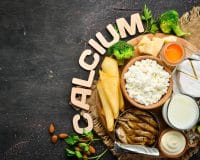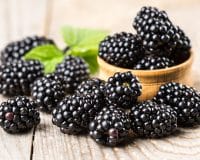5 Reasons To Eat More Fish
Eating fish is a wonderful way to get healthy omega-3 fatty acids, but it can be hard to find the time or motivation. Omega-3 fatty acids are key ingredients that help combat heart disease and lower cholesterol levels. It’s also an easy way to eat more protein without eating too many calories. But sometimes, people don’t know how to cook fish, or they’re not sure where to buy it from. This article will teach you all about five of the health benefits of eating fish and how you can make this delicious dish in your kitchen!
If you’re looking for a way to improve your health, eating fish may be a reasonable option for you. There are all sorts of different types of fish to choose from, so you can find one that you like the taste of. Add some fish to your diet today and start enjoying the many health benefits it has to offer!

1It Counters Depression
Depression is a serious mental health condition that can hurt your quality of life. It’s estimated that depression affects around 350 million people worldwide. Depression can cause feelings of sadness, emptiness, and hopelessness. It can also lead to problems with sleep, appetite, and concentration.
If you’re struggling with depression, fish may be a reasonable option for you. Fish is an excellent source of omega-3 fatty acids, which can help reduce the symptoms of depression. Omega-3 fatty acids play a key role in maintaining mental health and preventing chronic diseases.

2Combats Heart Disease
Fish can reduce your risk of heart disease by as much as 40%. It’s high in omega-3 fatty acids, which are great for your heart health. They help lower bad cholesterol levels and keep your arteries clear. Fish is also an amazing source of protein, which can help keep your heart healthy and strong.
Omega-3 fatty acids are necessary for good health. They play a key role in maintaining heart health, preventing chronic diseases, and reducing inflammation. Fish is one of the best sources of omega-3 fatty acids out there, so it’s a fantastic way to get these essential nutrients into your diet.

3Full Of Healthy Omega-3 Fatty Acids
Fish is a fantastic source of omega-3 fatty acids, which are important for good health. These fatty acids help lower bad cholesterol levels, keep your arteries clear, and reduce inflammation. Fish is also an excellent source of protein, which can help keep your heart healthy and strong.
If you’re looking for a way to get more omega-3 fatty acids into your diet, fish is a wonderful option. There are all sorts of different types of fish to choose from. You can find one that you like the taste of.

4Lower In Calories
Fish is healthy, low-calorie food. A three-ounce serving of fish contains around 120 calories. This is lower than the calorie content of other types of protein-rich foods, such as red meat and poultry. Fish is a fantastic option if you’re looking for a healthy, low-calorie meal. It’s packed with protein and vital nutrients, but it doesn’t contain a lot of calories – this makes it a wonderful choice for people who are trying to lose weight or maintain a healthy weight.
Eating fish is a terrific way to get important nutrients into your diet. Fish is high in omega-3 fatty acids, which are beneficial for your heart health. It can also help reduce the symptoms of depression and improve eyesight. Fish is a healthy, low-calorie food, making it a great option for people who are trying to lose weight or maintain a healthy weight.

5Helps Improve Eyesight
Eyesight is one of the most important senses we have. It allows us to see the world around us and interact with it. Good eyesight is vital for completing everyday tasks, such as reading, driving, and cooking. Some studies have shown that fish can help improve eyesight. This is because fish is an excellent source of omega-3 fatty acids, which are essential for good eye health.
Omega-3 fatty acids help protect the eyes from age-related conditions, such as macular degeneration and cataracts. They also help keep the eyes healthy and strong. If you’re looking for a way to improve your eyesight, eating fish may be a reasonable option. There are all sorts of different types of fish to choose from, so you can find one that you like the taste of.

Do you want to improve your heart health, prevent chronic diseases, and reduce inflammation? If so, eating fish may be a reasonable option for you. Fish is a great source of omega-3 fatty acids, which are essential for good health. Omega-3 fatty acids help lower bad cholesterol levels, keep your arteries clear, and reduce inflammation. Fish is also a nice source of protein, which can help keep your heart healthy and strong.
If you’re looking for a way to improve your health, eating fish may be a sound option for you. There are all sorts of different types of fish to choose from, so you can find one that you like the taste of. Add some fish to your diet today, and start enjoying the many health benefits it has to offer!














